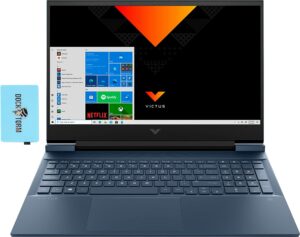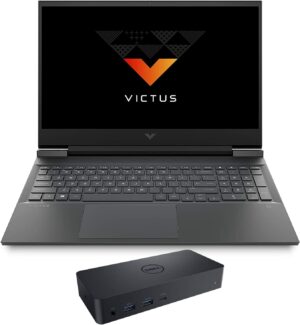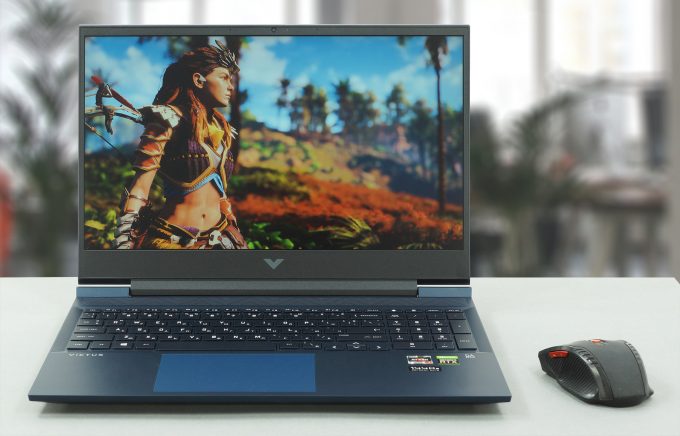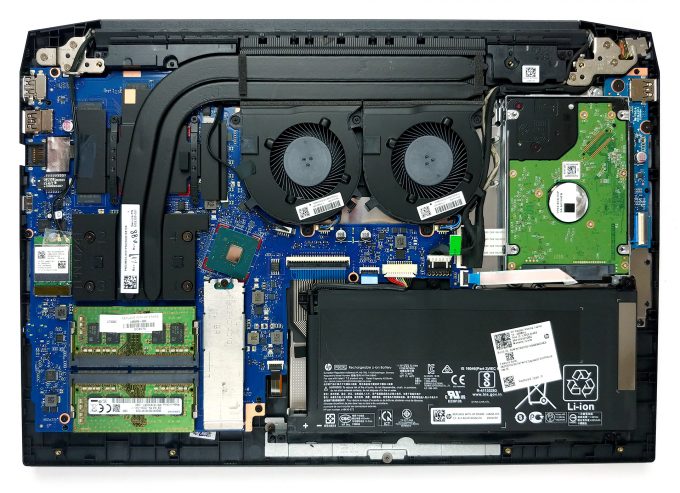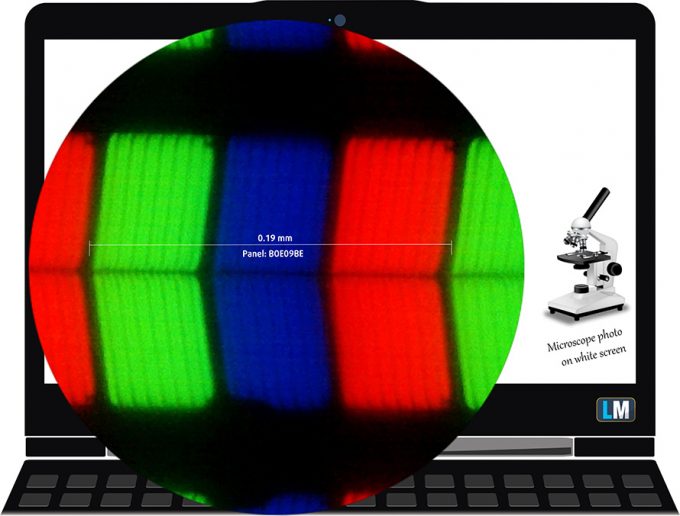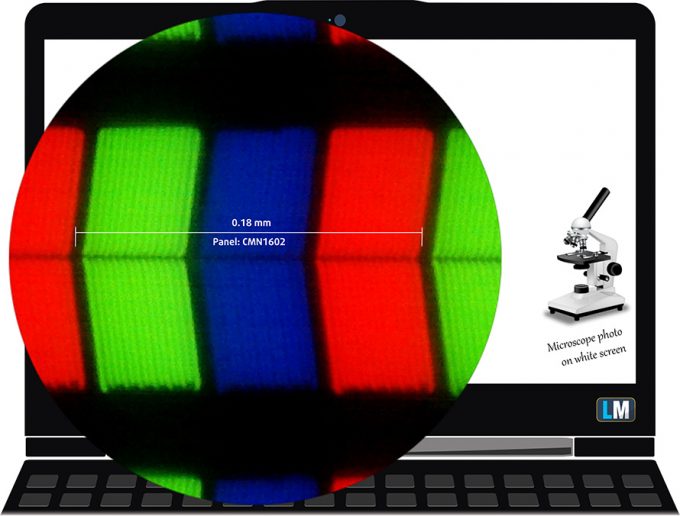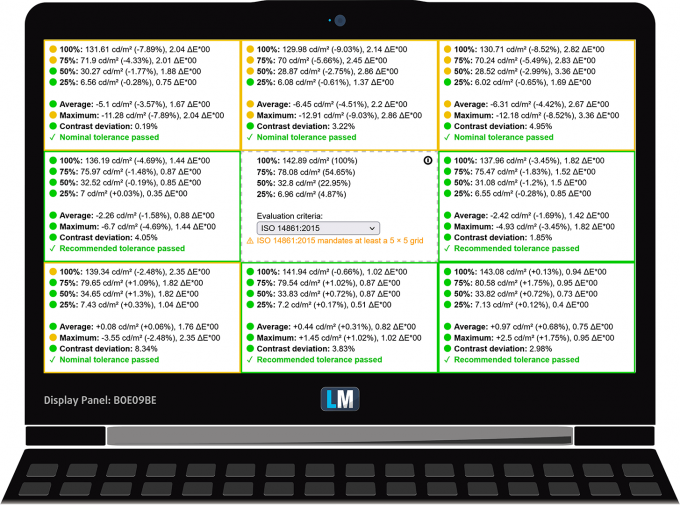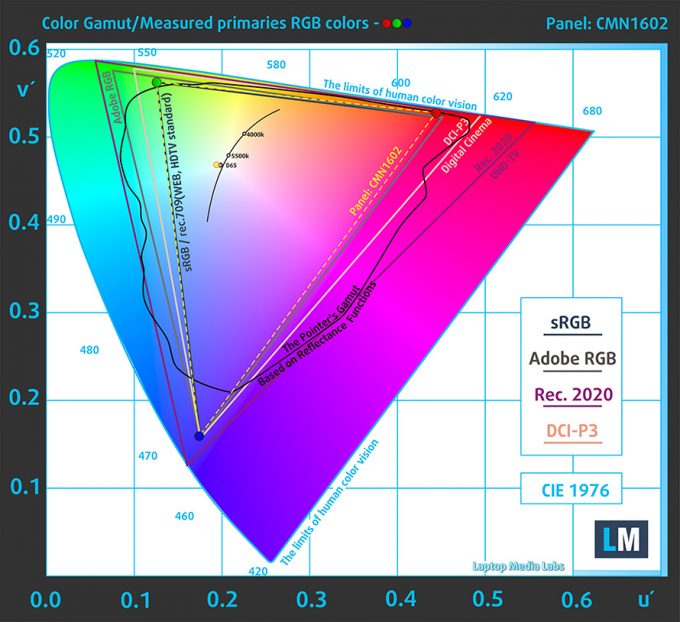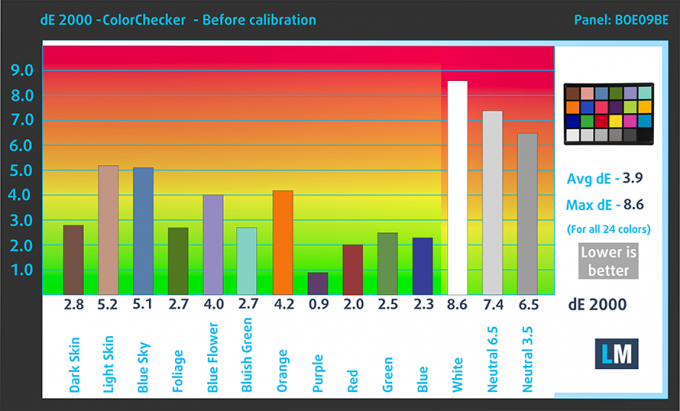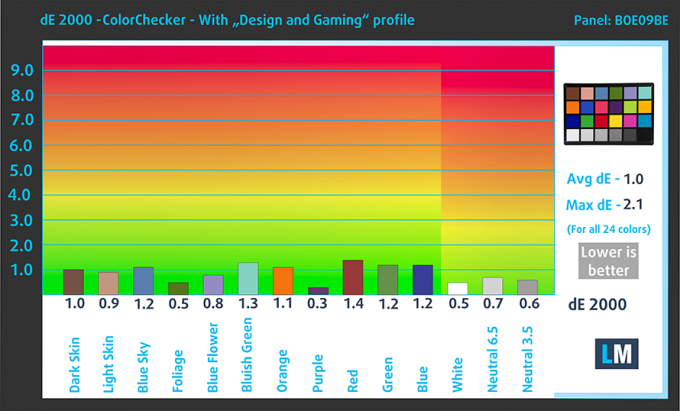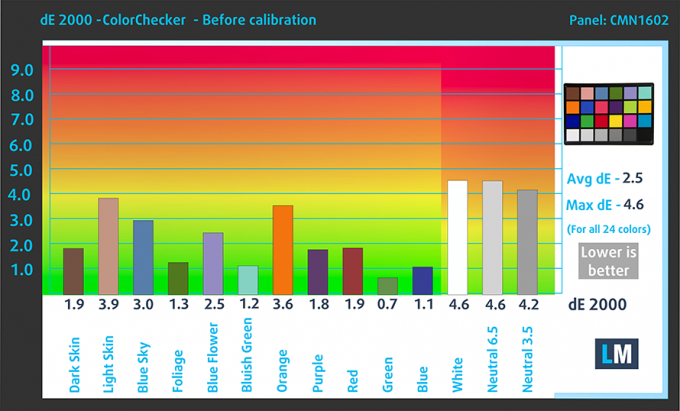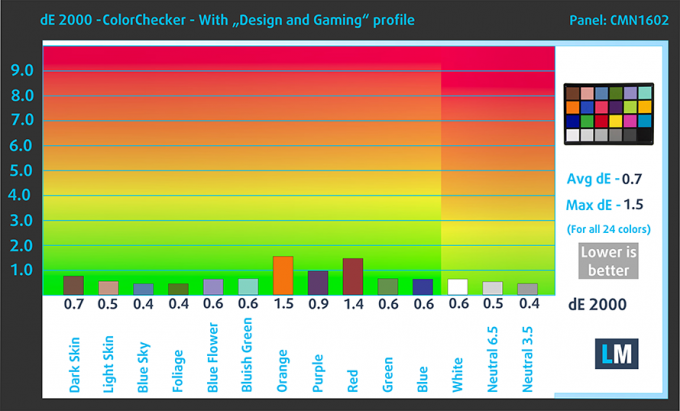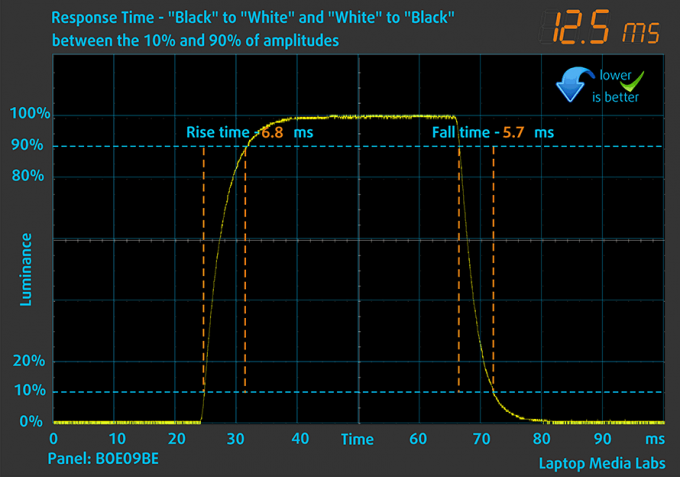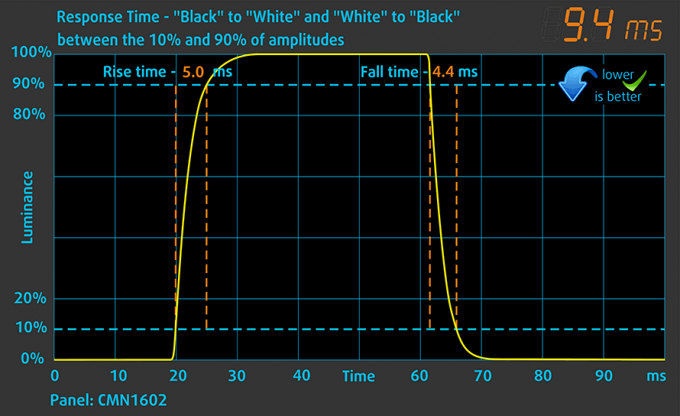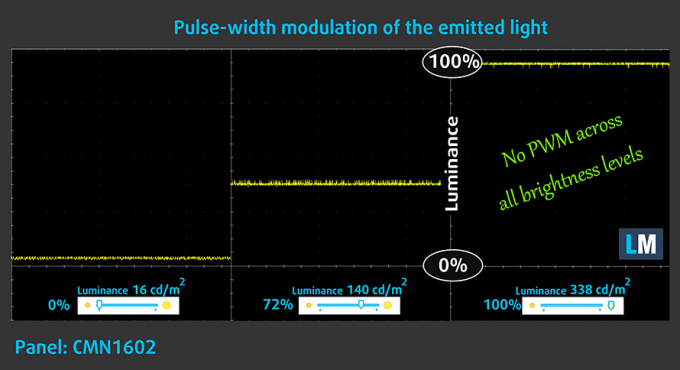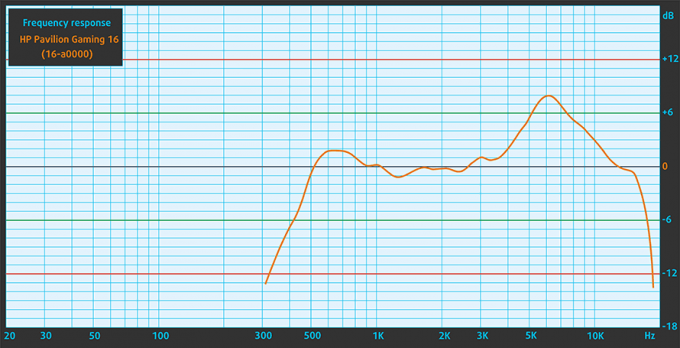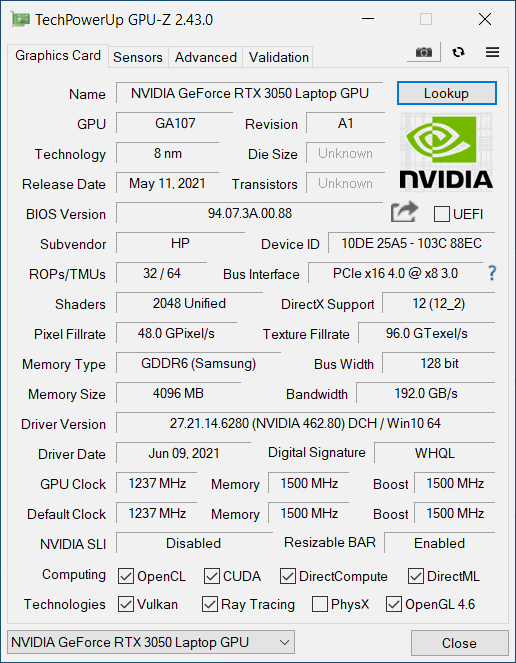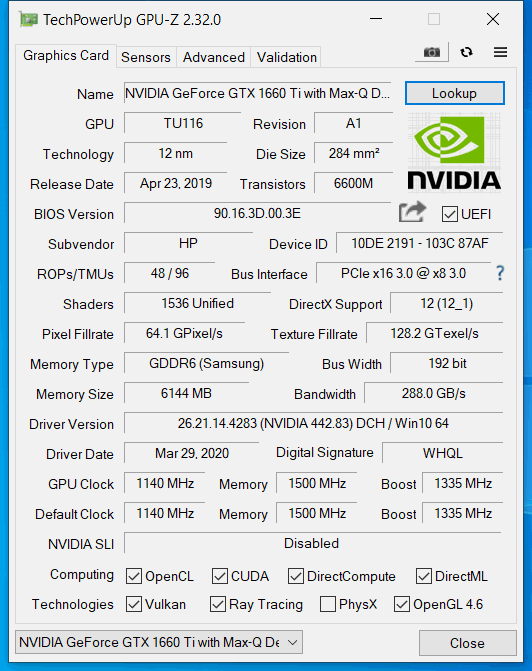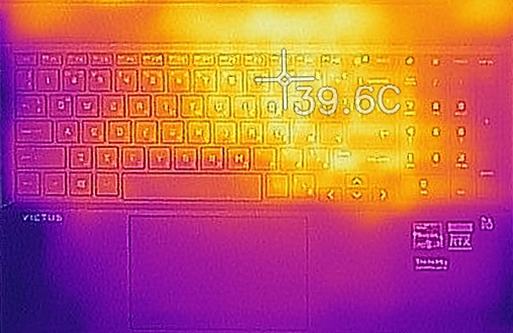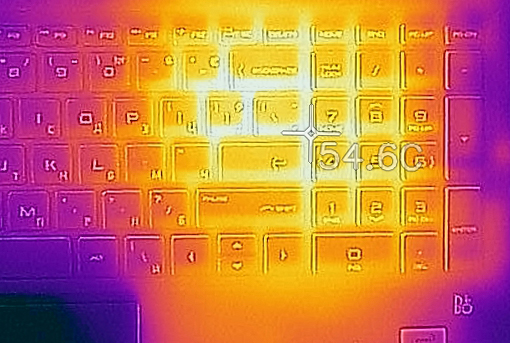[In-Depth Comparison] HP Victus 16 (16-e0000) vs HP Pavilion Gaming 16 (16-e0000) – they might as well be twins
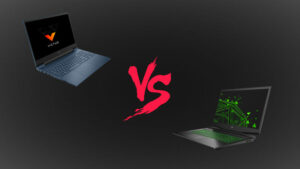 HP’s nomenclature and portfolio are confusing at times. While they are trying to update it to be more clear, there are still remnants of it. Today we have the Victus 16, which is an interesting Creator/Gaming chimera laptop, featuring both a great display for design and artwork, while also bringing the performance that you need when gaming.
HP’s nomenclature and portfolio are confusing at times. While they are trying to update it to be more clear, there are still remnants of it. Today we have the Victus 16, which is an interesting Creator/Gaming chimera laptop, featuring both a great display for design and artwork, while also bringing the performance that you need when gaming.
The truth is that they have already done it before, only that time the laptop was called the Pavilion Gaming 16. It uses the same formula, just has a different coat of paint on top. It also brings older specs, which can still be relevant in 2021 and beyond, provided the price is good enough.
Today we are giving you an in-depth comparison between the HP Victus 16 (16-e0000) and the HP Pavilion Gaming 16 (16-a0000).
HP Victus 16 (16-e0000): Full Specs / In-depth Review
HP Pavilion Gaming 16 (16-a0000): Full Specs / In-depth Review
HP Victus 16 (16-e0000) configurations:
HP Pavilion Gaming 16 (16-a0000) configurations:
Contents
Design and construction
The Victus 16 surprises with its design, being very similar to the OMEN family, featuring a boxy shape with sharp corners and edges. It is entirely built of plastic but has a decent build quality. With a height of 23.6 mm and a weight of 2.46 kg, this is an average device in terms of portability, but considering the 16.1-inch panel and the hardware under the hood, the weight is justified. Branding-wise, HP’s logo is nowhere to be seen, being replaced by the Victus V-logo, which takes center stage on the lid and the bottom bezel. It also can be opened with one hand.
Going over to the Pavilion, we see a very similar overall shape with some small differences. The Pavilion Gaming 16 has a more angular design, which when paired with the green touches, makes for a more gamer-y aesthetic. It is still made of plastic, and the build quality is serviceable, with the lid and base making some noises when you try to twist them. The notebook is around 100 grams lighter while having the same thickness as the Victus 16. Its lid also opens with a single hand.
Keyboard and touchpad
Both keyboards span through the whole notebook and feature a NumPad section. The unit on the Victus does however bring longer key travel and clickier feedback, while also featuring slightly larger “Up” and “Down” arrow keys. All in all, the Victus 16 brings a very comfortable keyboard for both typing and gaming. The touchpad weirdly enough comes in a different shade of blue and has a nice size. The unit is also very responsive, especially when paired with the fast refresh rate display.
The Pavilion Gaming 16’s keyboard is comfortable for typing, but the keys do have somewhat uneven feedback and the clicks aren’t uniform across the entire keyboard deck. There is of course a green backlight, which is fitting with the Green HP logo on the lid. The touchpad is large and very comfortable, both in terms of gliding and tracking.
Ports
The Victus 16 brings decent coverage, coming with a total of three USB Type-A 3.2 (Gen. 1) ports, a single USB Type-C 3.2 (Gen. 1) port, a LAN port, an HDMI connector, an SD card reader, and a 3.5 mm audio jack.
The Pavilion 16’s I/O is very similar in quantity, with the only difference being that it misses one USB Type-A port, coming with two instead of three. You still get an SD card reader, Ethernet and HDMI connectors, an audio jack, and a Type-C port, while here all USB ports also run at 3.2 speeds.
HP Victus 16 (16-e0000)
HP Pavilion Gaming 16 (16-a0000)
Spec sheet
HP Victus 16 (16-d0000, e0000) series
- GPU
- NVIDIA GeForce RTX 3060 (Laptop) #116 in Top GPUsNVIDIA GeForce RTX 3050 Ti (Laptop, 75W) #147 in Top GPUsNVIDIA GeForce RTX 3050 (Laptop, 75W) #167 in Top GPUsNVIDIA GeForce RTX 3050 (Laptop) #177 in Top GPUsNVIDIA GeForce GTX 1650 (Laptop) #196 in Top GPUsAMD Radeon RX Vega 7 (R4000/5000, 35/45W) #236 in Top GPUsAMD Radeon RX 5500M (4GB GDDR6)AMD Radeon Pro 5500M (4GB GDDR6)
- Dimensions
- 370 x 260 x 23.6 mm (14.57" x 10.24" x 0.93")
- Weight
- 2.46 kg (5.4 lbs)
- Price
- Not Available
HP Pavilion Gaming 16 (16-a0000) series
- Dimensions
- 370 x 262.4 x 23.6 mm (14.57" x 10.33" x 0.93")
- Weight
- 2.35 kg (5.2 lbs)
- Price
- Not Available
Disassembly, upgrade options
Both laptops are held together by 8 Phillips-head screws, which when undone reveal two SODIMM RAM slots, that can fit up to 64GB of DDR4 memory. In terms of storage, the Victus 16 offers two M.2 PCIe x4 drives, while the Pavilion Gaming 16 has one M.2 NVMe drive and a 2.5-inch SATA drive.
Display quality
Both laptops come with two identical display options, in terms of specs. They have a 16.1-inch diagonal, Full HD resolution, use IPS panels, and come with either 60Hz or 144Hz refresh rate. The laptops that we tested both came with the 144Hz option. They also share the same pixel density of 137 PPI and Retina distance of 64cm or 25 inches. The Victus has a slightly longer pitch of 0.19 x 0.19 mm, while the Pavilion Gaming 16 has a pitch of 0.186 x 0.186 mm.
Both displays have excellent viewing angles. We offer images at 45° to evaluate image quality.
The panel on the Victus 16 has a higher max brightness of 368 in the middle of the screen and 353 as an average for the entire display area, with a maximum deviation of 9%. Its contrast ratio is slightly lower, however, calculated at 1150:1.
The Pavilion Gaming 16 has a max brightness of 338 nits in the middle of the screen and 304 nits as an average for the whole area, with a maximum deviation of 13%. The contrast ratio of the panel is 1240:1, which is brought down to 1180:1 after applying the Design and Gaming profile.
Color coverage
To make sure we are on the same page, we would like to give you a little introduction to the sRGB color gamut and the Adobe RGB. To start, there’s the CIE 1976 Uniform Chromaticity Diagram that represents the visible specter of colors by the human eye, giving you a better perception of the color gamut coverage and the color accuracy.
Inside the black triangle, you will see the standard color gamut (sRGB) that is being used by millions of people on HDTV and on the web. As for the Adobe RGB, this is used in professional cameras, monitors, etc for printing. Basically, colors inside the black triangle are used by everyone and this is the essential part of the color quality and color accuracy of a mainstream notebook.
Still, we’ve included other color spaces like the famous DCI-P3 standard used by movie studios, as well as the digital UHD Rec.2020 standard. Rec.2020, however, is still a thing of the future and it’s difficult for today’s displays to cover that well. We’ve also included the so-called Michael Pointer gamut, or Pointer’s gamut, which represents the colors that naturally occur around us every day.
The yellow dotted line shows the color coverage of both the HP Victus 16 (16-e0000) and the HP Pavilion Gaming 16 (16-a0000).
Both laptops show near full sRGB coverage, with 99% for the Victus 16 and 96% for the Pavilion Gaming 16.
Color accuracy
We tested the accuracy of the display with 24 commonly used colors like light and dark human skin, blue sky, green grass, orange, etc. You can check out the results at factory condition and also, with the “Design and Gaming” profile.
Below you can check the results from the test of both laptops, with both the factory settings (left) and with our “Design and Gaming” profile applied (right).
Both panels were positively affected by our profile, bringing the dE value to 1.0 or even lower. This makes the laptops ready for professional work.
HP Victus 16 (16-e0000)
HP Pavilion Gaming 16 (16-a0000)
Response time (Gaming capabilities)
We test the reaction time of the pixels with the usual “black-to-white” and “white-to-black” methods from 10% to 90% and vice versa.
The Pavilion Gaming 16 had a faster Fall + Rise time of 9.4 ms.
Health Impact / PWM (Blue light)
PWM – Screen flickering
Pulse-width modulation (PWM) is an easy way to control monitor brightness. When you lower the brightness, the light intensity of the backlight is not lowered, but instead turned off and on by the electronics with a frequency indistinguishable to the human eye. In these light impulses, the light/no-light time ratio varies, while brightness remains unchanged, which is harmful to your eyes. You can read more about that in our dedicated article on PWM.
In terms of flickering both panels show no usage of PWM across any brightness levels.
Blue light emissions
Installing our Health-Guard profile not only eliminates PWM but also reduces the harmful Blue Light emissions while keeping the colors of the screen perceptually accurate. If you’re not familiar with the Blue light, the TL;DR version is – emissions that negatively affect your eyes, skin, and your whole body. You can find more information about that in our dedicated article on Blue Light.
Buy our profiles
HP Victus 16 (16-e0000) 16.1″ Full HD IPS BOE BOE09BE: Buy our profiles
HP Pavilion Gaming 16 (16-a0000) 16.1″ FHD IPS Innolux N161HCA-GA1 (CMN1602): Buy our profiles
Sound
While the Pavilion Gaming’s speakers are front-firing, the Victus 16 uses a down-firing setup. The latter produces decent quality sound. The Pavilion Gaming 16’s speakers are relatively loud and give off good quality audio. While the lows do have some deviations, the mids and highs are clear.
Battery
Now, we conduct the battery tests with Windows Better performance setting turned on, screen brightness adjusted to 120 nits, and all other programs turned off except for the one we are testing the notebook with. The Victus 16 has a bigger battery pack of 70Wh, compared to the 52.5Wh unit on the Pavilion Gaming 16. This translates to a difference of almost four hours in Web browsing and more than two hours in video playback.
In order to simulate real-life conditions, we used our own script for automatic web browsing through over 70 websites.
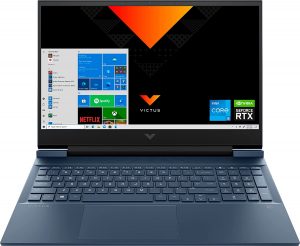

For every test like this, we use the same video in HD.


Performance
With the Victus 16, you have two AMD Zen 3 Ryzen 5000H-series CPU options, with the Ryzen 5 5600H and the Ryzen 7 5800H. The Pavilion Gaming 16, being an older device, offers two Comet Lake H-series chips with the Core i5-10300H and the Core i7-10750H.
Taking a look at the GPU options, the Victus 16 offers the RTX Ampere GPUs, with the RTX 3050, RTX 3050 Ti, and the RTX 3060. The GTX 1650 is also available. On the Pavilion laptop, you get the GTX 1650, GTX 1650 Ti, GTX 1660 Ti Max-Q, or the RTX 2060 Max-Q.
CPU benchmarks
Here we tested the Ryzen 7 5800H and the Core i7-10750H. To no surprise the newer Zen 3 CPU is running laptops around its opponent, being 71% faster in 3D Rendering, while the Photoshop difference was minuscule in comparison with a difference of nearly 0.7 seconds.
Results are from the Cinebench R23 CPU test (the higher the score, the better)
Results are from our Photoshop benchmark test (the lower the score, the better)
GPU benchmarks
Here we tested the RTX 3050 (75W) and the GTX 1660 Ti Max-Q. The GPUs were really close, in terms of performance, with the 1660 Ti coming ahead by 2% in both 3DMark Fire Strike and Unigine Heaven. Where the RTX 3050 was slightly faster is in Unigine Superposition, where it scored 6% higher.
Results are from the 3DMark: Time Spy (Graphics) benchmark (higher the score, the better)
Results are from the 3DMark: Fire Strike (Graphics) benchmark (higher the score, the better)
Results are from the Unigine Superposition benchmark (higher the score, the better)
Gaming tests

| Far Cry 5 | Full HD, Normal (Check settings) | Full HD, High (Check settings) | Full HD, Ultra (Check settings) |
|---|---|---|---|
| HP Victus 16 (16-e0000) – RTX 3050 (75W) | 90 fps (+1%) | 83 fps (+1%) | 77 fps (+1%) |
| HP Pavilion Gaming 16 (16-a0000) – GTX 1660 Ti Max-Q | 89 fps | 82 fps | 76 fps |

| Rise of the Tomb Raider (2016) | Full HD, Medium (Check settings) | Full HD, Very High (Check settings) | Full HD, MAX (Check settings) |
|---|---|---|---|
| HP Victus 16 (16-e0000) – RTX 3050 (75W) | 112 fps | 55 fps | 37 fps |
| HP Pavilion Gaming 16 (16-a0000) – GTX 1660 Ti Max-Q | 112 fps | 57 fps (+4%) | 37 fps |
| Tom Clancy’s Ghost Recon Wildlands | Full HD, High (Check settings) | Full HD, Very High (Check settings) | Full HD, Ultra (Check settings) |
|---|---|---|---|
| HP Victus 16 (16-e0000) – RTX 3050 (75W) | 67 fps | 59 fps | 35 fps |
| HP Pavilion Gaming 16 (16-a0000) – GTX 1660 Ti Max-Q | 68 fps (+1%) | 60 fps (+2%) | 40 fps (+14%) |
Temperatures and comfort
Both laptops don’t bring the pinnacle of cooling. The Victus has two heat pipes, which connect to two heat sinks and keep the CPU and GPU cool, with two heat spreaders for the VRM modules and graphics memory. The Pavilion device also has two heat pipes but instead of two heat sinks, it has one, which is larger.
Max CPU load
In this test we use 100% on the CPU cores, monitoring their frequencies and chip temperature. The first column shows a computer’s reaction to a short load (2-10 seconds), the second column simulates a serious task (between 15 and 30 seconds), and the third column is a good indicator of how good the laptop is for long loads such as video rendering.
Average core frequency (base frequency + X); CPU temp.
| AMD Ryzen 7 5800H (45W TDP) | 0:02 – 0:10 sec | 0:15 – 0:30 sec | 10:00 – 15:00 min |
|---|---|---|---|
| HP Victus 16 (16-e0000) | 3.29 GHz (B+3%) @ 80°C | 3.20 GHz (B+0%) @ 80°C | 3.27 GHz (B+2%) @ 89°C |
| HP Omen 15 (2021, 15-en1000) | 3.33 GHz (B+4%) @ 78°C | 3.33 GHz (B+4%) @ 85°C | 3.42 GHz (B+7%) @ 88°C |
| ASUS ROG Strix SCAR 15 G533 | 3.43 GHz (B+7%) @ 76°C | 3.35 GHz (B+5%) @ 80°C | 3.47 GHz (B+8%) @ 82°C |
| ASUS ROG Zephyrus Duo 15 SE (GX551) | 3.93 GHz (B+23%) @ 81°C | 3.82 GHz (B+19%) @ 86°C | 3.78 GHz (B+18%) @ 93°C |
| ASUS TUF A17 (FA706) 2021 | 3.42 GHz (B+7%) @ 74°C | 3.34 GHz (B+4%) @ 78°C | 3.35 GHz (B+5%) @ 84°C |
When compared to other laptops with the same CPU, the Victus performs the worst, in terms of clock speeds, while the temperatures can be better as well.
| Intel Core i7-10750H (45W TDP) | 0:02 – 0:10 sec | 0:15 – 0:30 sec | 10:00 – 15:00 min |
|---|---|---|---|
| HP Pavilion Gaming 16 (16-a0000) | 3.74 GHz (B+44%) @ 97°C | 3.17 GHz (B+22%) @ 88°C | 2.98 GHz (B+15%) @ 78°C |
| HP Omen 15 2020 (15-ek0000) | 3.55 GHz (B+37%) @ 71°C | 2.88 GHz (B+11%) @ 62°C | 2.81 GHz (B+8%) @ 70°C |
| Acer Predator Helios 300 (PH315-53) | 3.56 GHz (B+37%) @ 76°C | 3.52 GHz (B+35%) @ 85°C | 2.98 GHz (B+15%) @ 75°C |
| Dell G5 15 5500 | 3.82 GHz (B+47%) @ 75°C | 3.63 GHz (B+40%) @ 99°C | 3.01 GHz (B+16%) @ 81°C |
| ASUS ROG Strix G15 G512 | 4.16 GHz (B+60%) @ 81°C | 3.99 GHz (B+53%) @ 95°C | 3.52 GHz (B+35%) @ 87°C |
| Acer Nitro 5 (AN517-52) | 3.05 GHz (B+17%) @ 68°C | 3.05 GHz (B+17%) @ 75°C | 2.90 GHz (B+12%) @ 79°C |
| Acer Nitro 5 (AN515-55) | 3.02 GHz (B+16%) @ 82°C | 3.04 GHz (B+17%) @ 92°C | 2.67 GHz (B+3%) @ 92°C |
| Lenovo Legion 7 (15) | 3.78 GHz (B+45%) @ 80°C | 3.69 GHz (B+42%) @ 83°C | 3.51 GHz (B+35%) @ 83°C |
The Pavilion Gaming 16 swims in similar waters, but to be fair, the Core i7-10750H isn’t the easiest of CPUs to tame.
Real-life gaming
| NVIDIA GeForce RTX 3050 | GPU frequency/ Core temp (after 2 min) | GPU frequency/ Core temp (after 30 min) | GPU frequency/ Core temp (Max Fan) |
|---|---|---|---|
| HP Victus 16 (16-e0000) | 1824 MHz @ 73°C @ 75W | 1814 MHz @ 73°C @ 75W | 1822 MHz @ 73°C @ 75W |
| MSI Katana GF66 | 1675 MHz @ 73°C @ 60W | 1660 MHz @ 78°C @ 60W | 1699 MHz @ 67°C @ 60W |
The Victus 16 manages to maintain pretty high clocks on its RTX 3050, and its 75W TGP can be maintained at all times.
| NVIDIA GeForce GTX 1660 Ti Max-Q | GPU frequency/ Core temp (after 2 min) | GPU frequency/ Core temp (after 30 min) |
|---|---|---|
| HP Pavilion Gaming 16 (16-a0000) | 1461 MHz @ 70°C | 1456 MHz @ 72°C |
| HP Pavilion Gaming 15 (15-ec0000) | 1511 MHz @ 66°C | 1493 MHz @ 68°C |
| ASUS ROG Zephyrus GA502 | 1396 MHz @ 78°C | 1432 MHz @ 81°C |
| HP Pavilion Gaming 15 2019 | 1400 MHz @ 66°C | 1365 MHz @ 71°C |
| HP Pavilion Gaming 17 2019 | 1334 MHz @ 67°C | 1282 MHz @ 75°C |
The Pavilion Gaming 16’s GPU maintains cool temperatures and good clock speeds when compared to other laptops with the GTX 1660 Ti Max-Q.
Gaming comfort
The Victus is way cooler on the outside, with the difference being around 15°C.
Verdict
Right from the get-go, we would like to say that both notebooks are great and what they offer is above and beyond what they charge you. A good-looking notebook with proper color-accurate display and a nice bit of performance. Not only that, but they can also game pretty well thanks to the Ampere GPUs inside the Victus and the older Turing units inside the Pavilion Gaming 16.
The Victus 16 is a clear favorite, sporting newer and more powerful hardware, especially in the CPU field. It has a more streamlined design, which doesn’t give off gamer-y vibes at all, while the V-branding makes it look more akin to the ZBook series, which are workstation devices.
Its keyboard is also more comfortable and seems to be of higher quality, bringing uniform feedback across the entire keyboard area. The touchpad, however, is great on both laptops, both when it comes to size, gliding, and accuracy.
I/O is similar, with the Victus 16 bringing one more USB Type-A port. Both laptops bring great displays with a dE value for color accuracy that is equal to or below 1.0, which is perfect, along with near full sRGB coverage, which will be enough for any designer.
The newer laptop wins out when it comes to battery life, sporting a larger unit, which makes quite a bit of difference, as the Victus lasted for 4 hours more in Web browsing and 2 hours more in video playback. CPU performance went in favor of the Victus as well, while the GTX 1660 Ti Max-Q put up quite a fight both in the synthetic and the gaming benchmarks.
Both laptops were equal when it comes to internal CPU and GPU temperatures, but the Pavilion Gaming 16 was much hotter on the outside, with its hotspot peaking at 54.6°C.
For most people, Victus 16 is the better option. After all, the Ampere graphics cards bring a large performance increase SKU to SKU. However, but if you’re on a tighter budget and you will mostly work with 2D Rendering and Gaming, where the Comet Lake H processors are still very competitive, you should go for it as they will only go down in price.
Why choose HP Victus 16 (16-e0000)?
- + Better keyboard
- + A sleeker design
- + Longer battery life
- + More powerful CPU and GPU options
Why choose HP Pavilion Gaming 16 (16-a0000)?
- + Lower price tag
- + Slightly more color-accurate display
- + Faster pixel-response times
HP Victus 16 (16-e0000): Full Specs / In-depth Review
HP Pavilion Gaming 16 (16-a0000): Full Specs / In-depth Review
All HP Victus 16 (16-e0000) configurations:
All HP Pavilion Gaming 16 (16-a0000) configurations:
